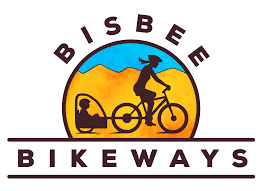
Who We Are
Founded in 2018, the Bisbee Bikeways Project is a grassroots movement tackling the dangers of car-centric infrastructure in rural Arizona. We are deeply connected to our community and committed to making our roads safer for everyone.
The Problem
Arizona is the 2nd most dangerous state for pedestrians, with crisis-level injuries and fatalities. State and local agencies continue prioritizing cars over people, leaving walkers and cyclists without safe routes.
Our Mission
Environment
Environment
Community
Community
Economy
Economy
Safety
Every donation brings us closer to safer streets.
Bisbee Bikeways is a project of the 501c3 Ecotopia.
Click the button to donate to the project.
Community Connections Master Plan
We’re creating a safe, connected network of shared-use paths for Bisbee and Naco. These paths are designed for both walkers and cyclists, separated from car traffic. The Lavender Pit is the FIRST path to be built. Help us figure out the rest! Where do YOU want to see paths?
We want your input! Add comments to our interactive map. Need help? Watch our short “how to” video to get started!
Interactive Map
Transforming Rural Arizona, One Safe Path at a Time
Our Impact
Despite massive challenges, we are driving real change:
- Mapped out 27 miles of shared-use paths
- Secured $76,000 in local funding
- Won nearly $10 million in grants
- Earned support from city, county, and state officials
- Recognized with the Distinguished Citizen Planner Award (2024)
What's Next?
Construction on our first major project, the Lavender Pit Shared Use Path, starts next year and the overall network is underway! See the interactive map above. This is just the beginning of a safer, more connected Bisbee and Cochise County.
Join us—because one more life lost is one too many.
Support the movement. Get involved today!
Subscribe
Sign up to hear updates about this project.